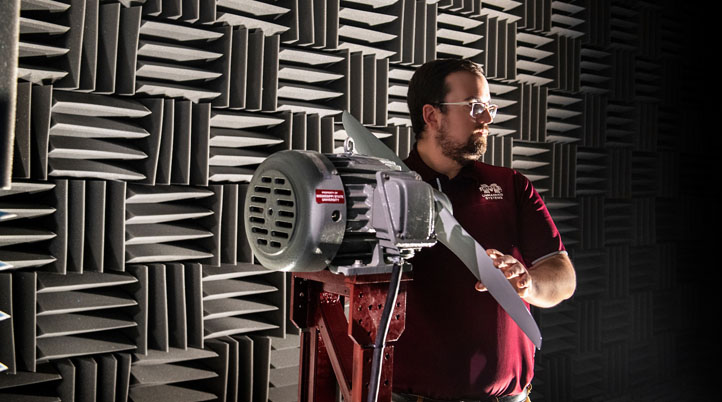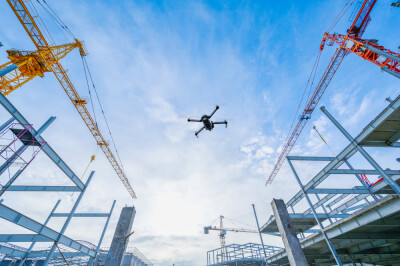In an age where drone delivery and urban air mobility are becoming a reality, it’s important to consider noise pollution. Even though drones are quieter than manned aircraft, the truth is their high-pitched sound is quite noisy, and no one wants to live somewhere where buzzing flying robots fly by all the time.
A research lab at Mississippi State University, the Raspet Flight Research Laboratory, has been doing drone flyover noise measurements since 2016. Now, Raspet Flight has built the university’s quietest flight lab, known as an acoustic anechoic chamber, that absorbs reflections of sound waves. Built as part of a collaborative research venture seeking to quiet unmanned aircraft systems, the lab is covered by dozens of eight-inch-deep polyurethane foam wedges in every inch of the 10-by-18-by-10 room’s interior, including its floor.
By absorbing sound waves emanating from within, researchers can accurately measure the precise sounds on which they are focused. In this case, the Raspet team will measure noise produced by propellers with four or five blades rather than the standard two, rotating at fewer revolutions per minute to reduce noise. The objective is to see which propellers create the same, or acceptably equivalent, thrusts at a potentially lower RPM.
As an academic research center dedicated exclusively to the advancement of Unmanned Aircraft Systems, the research lab has strong connections with the FAA and the U.S. Department of Defense. This research is sponsored by the latter, which in the future could “enable the U.S. Army UAS to one day fly cooler, quieter and with more efficiency than ever.” While the research is more focused on military applications, advancements in this space can also allow commercial UAS, for example, to survey crops, inspect buildings, map site zones, perform drone deliveries, or transport people more quietly, resulting in fewer disturbances for those on the ground. Noise has been cited as a major concern for the public, who are reluctant to allow drone operations in their communities for this reason.
In 2017, a NASA study, with the initial purpose of proving that Langley’s acoustics research facilities could contribute to NASA’s study on drones, ended up concluding that drone buzzes are more annoying than cars - even when taking into consideration that car noises were most likely considered less annoying because we’re used to them. However, just like electric cars are now much quieter than traditional vehicles, studies like the Raspet team will, hopefully, come up with a quieter solution for drone propellers.
















Comments